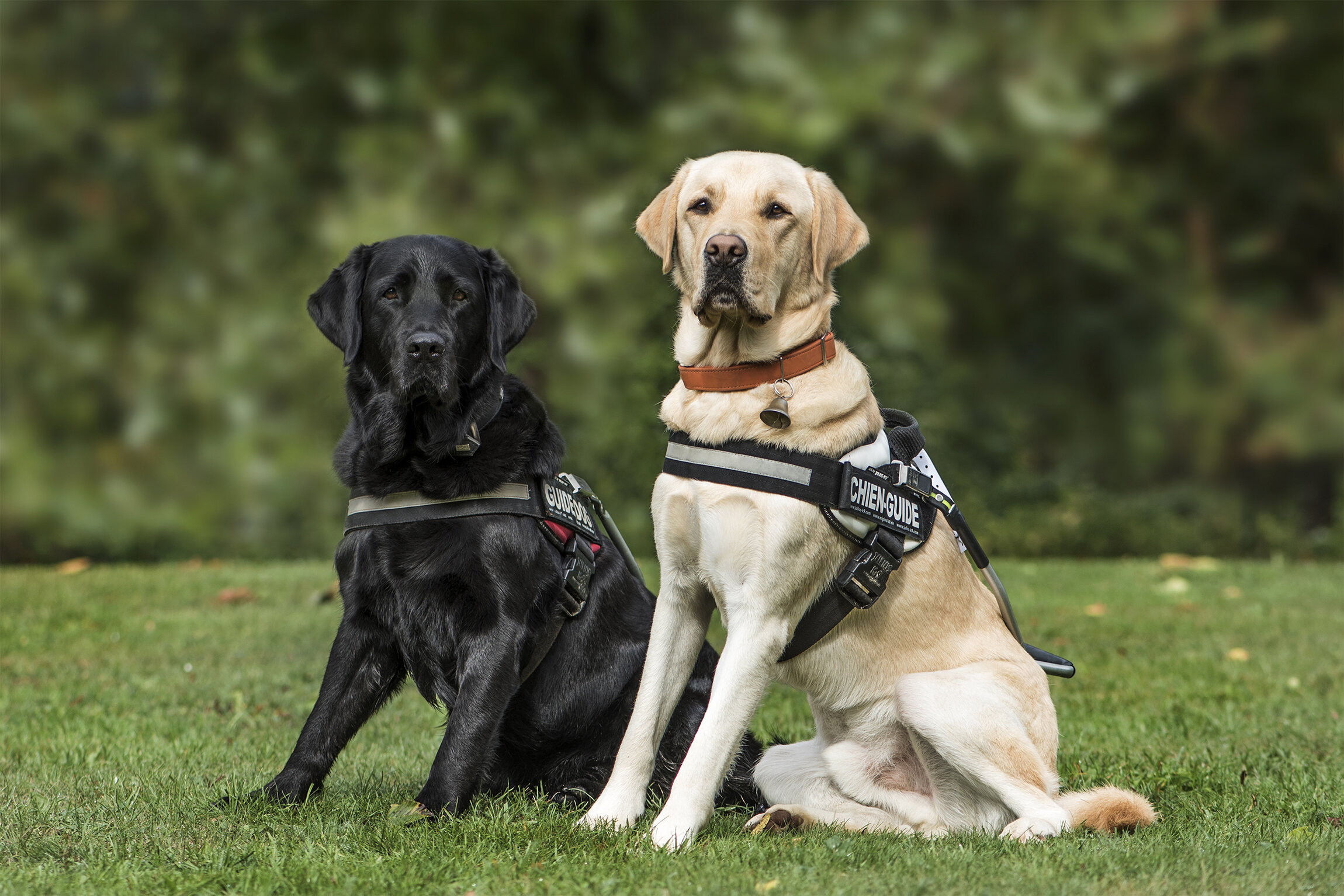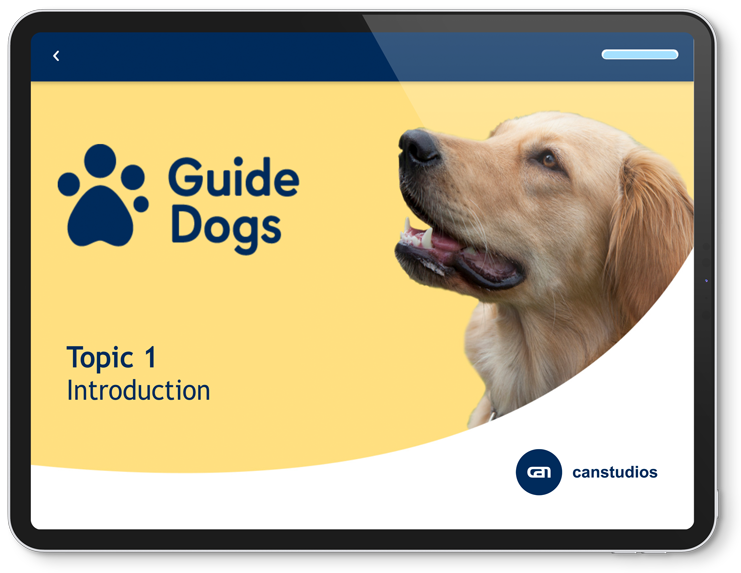
CASE STUDY
Guide Dogs’ accessible course engages learners with and without sight
Each year Guide Dogs for the Blind trains around 700 dogs to help visually impaired people live life to the full, with confidence.
The wellbeing of the dogs and their owners depends on that training being consistent, effective and ethical. We built Guide Dogs elearning that explains the positive reinforcement principles that underpin their dog training – and is accessible to all their staff, including those with sight loss.
Challenge
Every Guide Dogs staff member comes into contact with the dogs and can influence their training. This elearning needed to work as both an engaging standalone introduction, and a resource for people who work directly with the dogs to refer back to. We had to ensure a rich learning experience for those with and without sight loss, and make sure the course worked well with assistive technology.
Key points
Adapt authoring
Accessible elearning
Bespoke content creation
Software engineering
Solution
We developed interactive content that introduced the basic behavioural principles with clear examples. This was supported by further reading, contained within the elearning module in accessible PDF format, for learners who wanted more detail.
Working in Adapt gave us the best possible start for a course that needed exceptional accessibility for visually impaired learners. Because Adapt-based courses are built in HTML5, there is an underlying structure and order that makes the interface navigable by screen reader – rather than being a mass of unorganised alt-text.
Of course, some interactions are more accessible than others. Our instructional and media designers worked closely with experts in the Guide Dogs team to test and understand which components we could use most successfully.
“The empathy of the Can Studios designers – their ability to understand the non-sighted learner experience – was immediately obvious. We were impressed by how hard they worked to make using the course via screen reader smooth, enjoyable and engaging.”
Annie Hourston
Head of Learning and Skills, Guide Dogs for the Blind Association
We also learned a lot from them about describing the interface for text to speech. Simple but vital practices – for example saying ‘card 1 of 3’ rather than just ‘card 1’ – gives learners using screen readers the context and cues to navigate the material confidently.
Another vital asset on this project were our in-house software engineers – who are experts in Adapt. They developed some custom technical fixes that made a more creative, and accessible, learner experience possible. (Can Studios became an official collaborator of the Adapt Learning project in 2017.)
For many of the Guide Dogs subject experts this was the first time they had worked on elearning. But the strong emphasis on accessibility meant non-technical contributors needed to understand more than usual about the technical build process, and what could and couldn’t be done.
To keep communication clear – and the project moving – we prioritised regular telephone briefings, while getting our team and Guide Dogs’ key people together in the same room to review the build.

“Within minutes I had complete confidence that we were working with a team who had the experience and skill to show us what was achievable and help us find the best solution for all our learners.”
Annie Hourston
Head of Learning and Skills, Guide Dogs for the Blind Association



